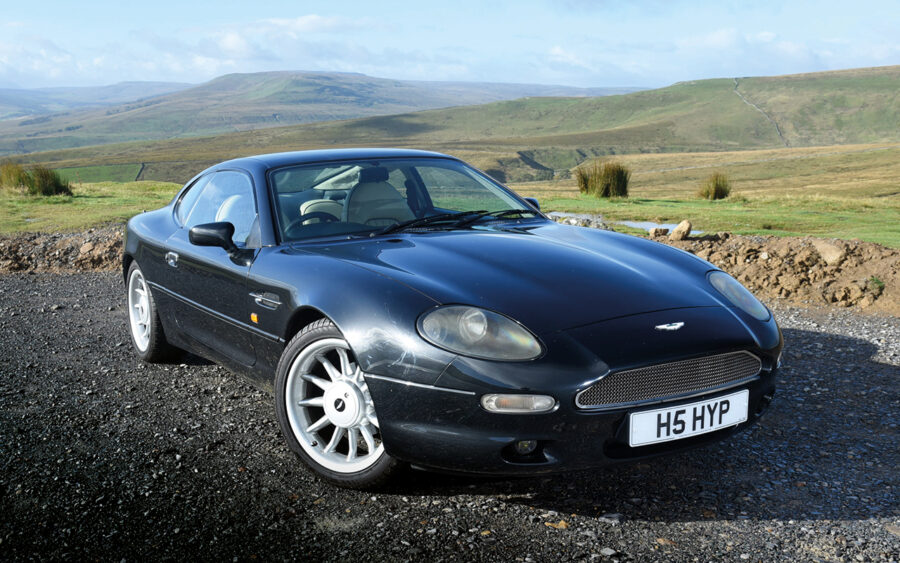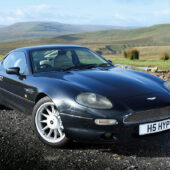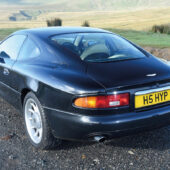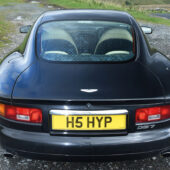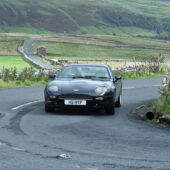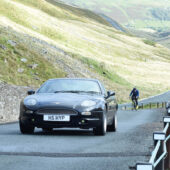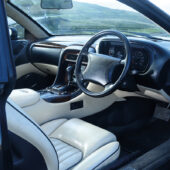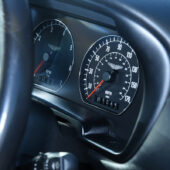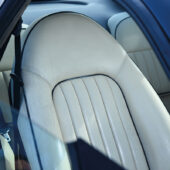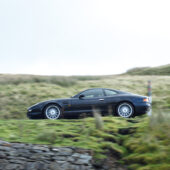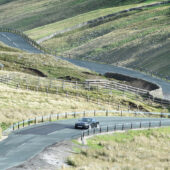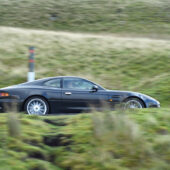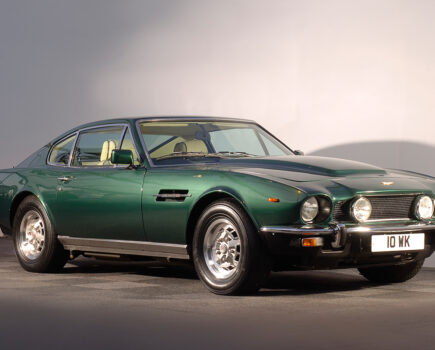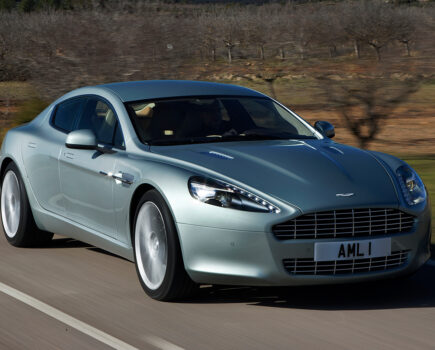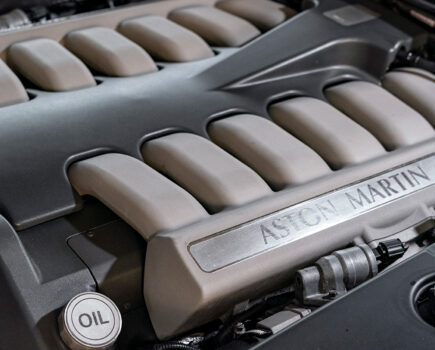The straight-six Aston Martin DB7 3.2 is the most attainable of them all. Here’s how to buy a great example of this modern classic
Words: Rob Hawkins Images: Paul Walton
One of the cheapest routes into Aston Martin ownership has got to be to buy a DB7, especially one with a 3.2-litre Jaguar AJ6 (Advanced Jaguar Six) derived engine that was commonly found in the XJ40. In fact, most of the car is derived from Jaguar, sharing a close resemblance to the first generation of the XK8 and XKR, but also utilising a number of its parts from Ford.
The DB7 3.2 was unveiled at the 1993 Geneva Motor Show, and production commenced the following year. A coupe was only available until 1996, when the Volante (convertible) was introduced alongside. Three years later, in 1999, a 6.0-litre V12-powered DB7 Vantage was launched, which shaved almost half a second off the 0-60mph time of the straight-six and helped to boost the overall image of the DB7 as a serious supercar. The straight-six models were consequently axed in May 1999 after roughly 3,000 of them had been sold.
We’re only looking at the DB7 3.2 models for this buying guide, which are far from inferior when compared with the V12, but often cheaper to buy and run – and potentially easier to work on.
The facts and figures for these models are hardly disappointing, with a top speed of 165mph, a 0-60mph time of 5.8 seconds and peak torque of 368lb ft at a low 3,000rpm, although should you rev the engine to 5,500rpm, you’ll be able to make the most of the 335bhp at the flywheel.
The DB7 is a moderately large sports car, with an overall length of 4,631mm, making it almost as long as a new BMW i4, and just as wide at 1,820mm. Inside, however, it’s not so roomy with adequate space for a driver and front seat passenger, but limited legroom in the rear that means the rear seats are only suitable for small children or very small adults.
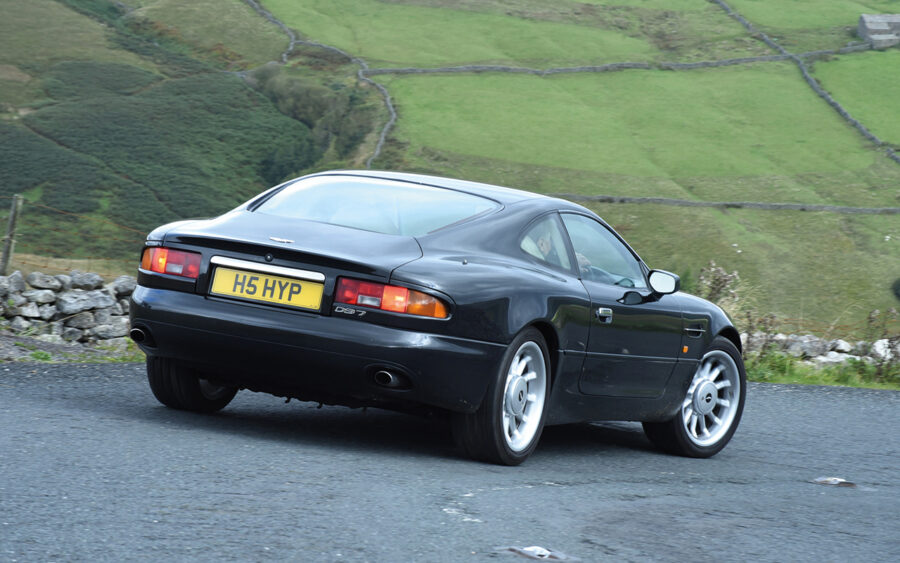
Weighing in at 1,725kg, the DB7 3.2 is far from light in sports car terms, which means you’ll need at least a two-ton trolley jack to raise a wheel or two. Working on these cars with their Ford and Jaguar parts requires a set of metric spanners and sockets, along with some hex (Allen key) and Torx bits.
It’s not always straightforward to spot whether a DB7 for sale has a straight-six or V12 engine. Anything registered before 1999 will be a straight-six, and anything advertised as a DB7 i6 should have a six-cylinder engine under the bonnet. 1999 was the crossover year, when straight-six production ended and the V12 was introduced.
If you are looking at a DB7 3.2 as an investment, then there are a few limited-edition models that may be of interest. The DB7 GTS for instance, is one of them. Commissioned and built for Aston Martin Sales of Mayfair and launched at the 1996 Goodwood Festival of Speed, Chiltern Aston Centre completed all of the work and also converted owners’ cars to GTS spec, which included bonnet bulges and louvres, yellow piping around the front nose cone and along the waistline, Speedline Aliseo split-rim alloy wheels, a sports exhaust system, white gauges with a GTS logo and additional wood in the cockpit.
The Volante Stratstone LE is another collectable, associated with Aston Martin dealer Stratstone of Mayfair in London. This was built by Aston Martin in 1999, comprising nine coupes and ten Volantes, all in RHD with special order Bowland Black paintwork, a light grey interior and a numbered plaque on the sill that stated which of the 19 cars each one was and the name of its first owner. Many more limited-edition and potentially collectable models were produced, but most of these were V12 powered.

Bodywork
Being of a steel monocoque construction with front and rear subframes that look very similar to those from the Jaguar XJS, the DB7 was fitted with plastic composite front wings, a bonnet and bootlid until 1997, after which the bonnet was made from steel, but the rest were still constructed from plastic, although aftermarket GRP panels soon became available.
When visually checking the exterior, look closely at the panel gaps to spot signs of accident damage, and carefully inspect the paintwork for mismatched panels that haven’t been correctly blended in, suggesting a partial respray. Any major panel damage can be expensive to repair. A complete bonnet assembly, for instance, costs around £3500, whereas a used bonnet can cost upwards of £500 and a new bonnet hinge assembly is a little over £200 new. And if you need a new headlight unit, then they can cost around £2000 or more per corner. Some parts vary greatly in price, such as front wings, where genuine components cost over £3000, but GRP copies are cheaper at around £150 each.
One of the major issues with the DB7’s bodywork concerns corrosion. Water ingress into the engine bulkhead area can result in expensive and time-consuming welding repairs, so check around this area for damp and rust. The bulkhead is double-skinned, so it may be difficult to fully assess all of the metalwork, which is an important structural part of the vehicle.
Other areas of the bodywork that are easier to assess, but just as susceptible to corrosion, include the sills, floors, chassis legs, the bottom edges of the doors, the wheelarches, jacking points and rear radius arm mounting points. Even the metal surround for the rear screen on a coupe can trap water and corrode, so look for bubbling paintwork and also water ingress in the boot and the back of the interior.
Chris Knowles at KWE Cars explains that the DB7 used the same floor pan as the XJS, “So corrosion will be found in the same places, notably floor pans, jacking points, sills and subframes.”
Some repair panels are available and are reasonably priced, such as a closing panel for the sill at under a tenner, but don’t forget to account for the cost of welding.
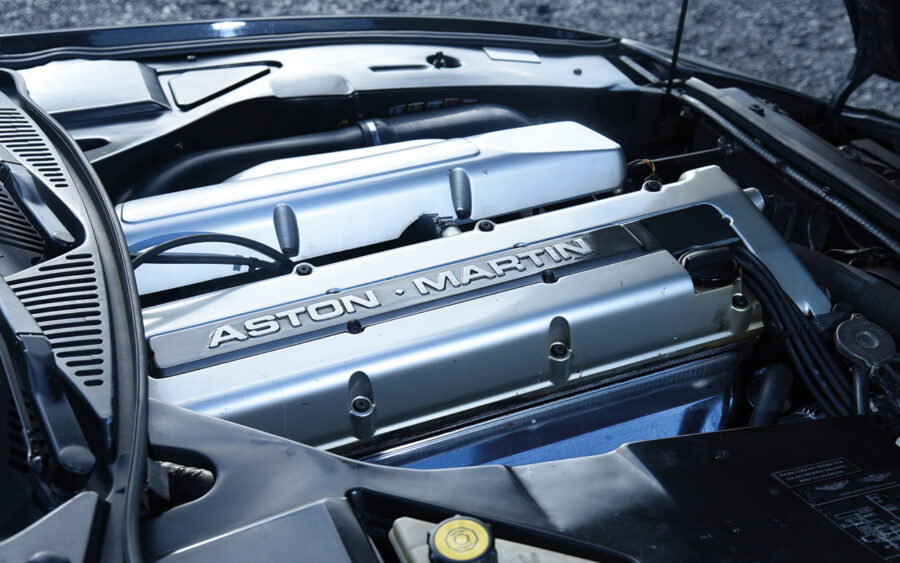
Engine and transmission
Look for evidence of annual oil changes and servicing of the supercharged six-cylinder Jaguar engine in the DB7 3.2. The Eaton M90 supercharger’s drivebelt, for instance, should be replaced every 30,000 miles.
“The Eaton M90 supercharger should have its oil changed every 50,000 miles even though it’s declared to be oiled ‘for life,’” says Chris Knowles. “The M90 supercharger is very hard to find now. Ideally, get a sample of oil out of the supercharger and look to see how black it is.” Chesterfield-based Powerhouse can rebuild the M90 supercharger, replacing the internal bearings and oil seals, although a failed end seal that’s leaking oil can be fixed for around £125. They also sell rebuild kits, but you will need a press to fit the new bearings, and they warn that the pulley can be difficult to remove, resulting in damage to other components.
Upon start-up, listen for top- and front-end rattles, suggesting timing chain issues, such as a failed tensioner. A timing chain replacement will be very expensive – over £2000 easy.
Listen also for blowing from around the exhaust manifolds (there are two), which can crack and cost around £250 each. And any rattles at idle from around the supercharger may mean it needs a part or full rebuild, as mentioned.
Look around the engine bay and underneath for oil leaks. The camshaft covers are known to leak, often fixed with new gaskets that cost around £85.
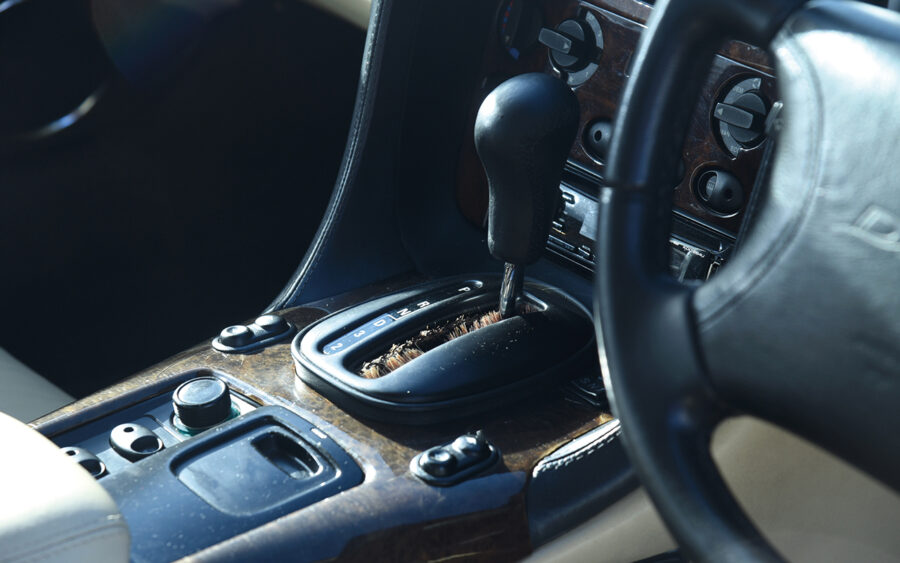
The choice of manual or automatic gearboxes in the DB7 3.2 are similar to those used in the Jaguar XJR (X300 generation), which comprises a Getrag 290 five-speed manual or a GM 4L80-E four-speed auto. Of the models we found for sale online, all were equipped with an automatic gearbox.
During a test drive, make sure automatic changes up and down the gearbox are smooth. Listen for clonks during a gearchange, whether it’s from the gearbox, propshaft or differential at the rear, which could suggest issues with worn joints or bearings.
Ask the seller whether the automatic gearbox has been serviced, which involves an oil and filter change. The service interval varies between the specialists we have spoken to, but it should be conducted every 50,000 miles. If any major issues are discovered on an automatic gearbox then the cost of an overhaul is a major expense.

Suspension, steering and brakes
The front suspension is partly secured to a subframe/crossmember and consists of upper and lower wishbones, separate springs and dampers and an anti-roll bar. Look for excessive corrosion in components such as the coil springs, the lower spring seat and the subframe. A misting of oil and dirt around the damper may mean it’s leaking – budget for around £100–200 per damper. A pair of front coil springs costs around £700.
Listen for front-end knocks and rattles during a test drive, which may mean a suspension bush has worn. These can cost as little as £10 (a pair of bushes for a front upper wishbone cost about £150), but it can be difficult to track down the cause of each unwanted noise. Worn mounting and drop-link bushes for the front anti-roll bar are a possible cause of a front-end knock when driving.
The rear suspension consists of another subframe, which also houses the differential. There’s a substantial lower arm at each rear corner, with a radius arm and twin coilovers. Each driveshaft forms the upper suspension arm. The design is very similar to the Jaguar XJS, so carefully check the condition of the subframe, looking for corrosion.
Check the large rubber mounts for the rear radius arms, looking for perishing that may result in poor handling. Budget for around £400 for a new radius arm with bushes. Look for leaks around the dampers and broken coil springs. If clonks and knocks can be heard from the rear when setting off, try to lever against the universal joints for the driveshafts to check for play, which could be the cause of the problem.
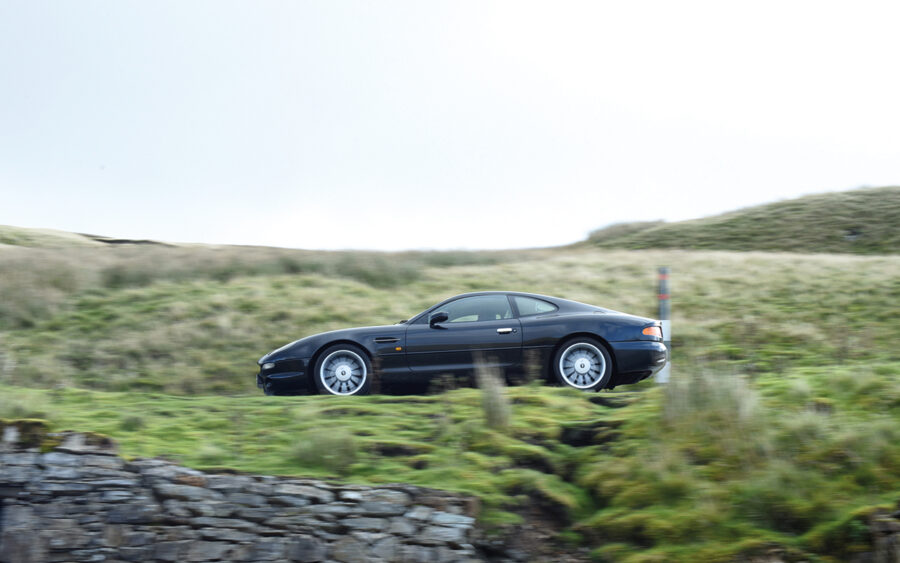
“The biggest risk is if the differential is leaking or noisy,” says Chris Knowles. “Check underneath for oil from the input and output shafts. Removing and reconditioning a diff can be over £4000 since the rear suspension has to be fully removed and stripped.”
A power-assisted rack-and-pinion steering system is employed on the DB7. With the engine running, make sure the steering is smooth to operate and consistent when turned from lock to lock. If there are any concerns, look inside the engine bay for the power steering pump and trace its hoses and pipes to look for power steering fluid leaks.
“Check steering play by driving at around 20mph, and move the steering wheel,” advises Chris Knowles. “The car should change direction with around a half-inch of movement at the rim. More than this means the rack bushes or other rubber suspension parts have deteriorated.”
The steering rack mounting bushes vary in price from under £10 to closer to £200. Some steering-related components are no longer available new, but some can be overhauled. Aston Martin Bits, for example, sells an overhaul kit for the DB7’s ZF power steering rack, which consists of a selection of seals. AMB also sells a pair of steering rack gaiters; however, they warn that the power steering pump is an exchange and reconditioned part only.
A dual-circuit, servo-assisted braking system is used on the DB7, with vented discs and four-pot calipers at the front and solid discs and single-piston calipers at the rear. The handbrake consists of a pair of mechanically operated shoes inside a drum that’s part of each rear brake disc.
Chris Knowles explains that the DB7’s braking system is now starting to show problems, often because the DOT 4 brake fluid isn’t refreshed every couple of years, so it absorbs moisture, which results in internal corrosion and failure of seals. “Take a cheap brake fluid moisture level meter and check,” he recommends. “Anything more than three percent water shows poor maintenance.”
During a test drive, check to see whether the steering pulls to one side under braking, which may suggest a seized or inactive caliper, or tracking issues. Afterwards, check whether any of the brakes are hotter than the others, but don’t touch the brake discs, especially if they are hot. From what can be seen of the brake discs, look for corrosion, cracking and excessive wear. Some parts are expensive, such as a brake caliper (front or rear) at around or over £700 – it may be cheaper to have an old caliper overhauled instead. And even if a car for sale clearly needs a new set of discs and pads all round, don’t disregard this because the total cost of all the parts (excluding fitting) will come close to £1000.
We have also found that some parts are unreasonably expensive, such as a wheel speed sensor at around £200, but the same sensor is used on the Jaguar S-Type and costs under £20 (and the same applies for some of the wiring to those wheel speed sensors).
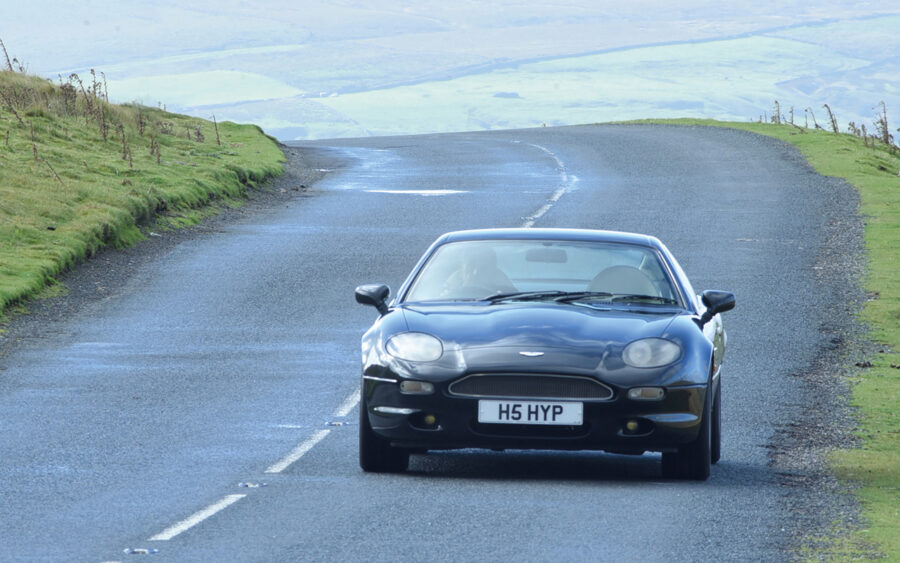
Interior, trim and electrics
Carefully inspect the condition of the upholstery, looking for tears, scratches and sagging, especially in the driver’s seat bolster where getting in and out of the car generates the most amount of wear here. And don’t forget to look at the headlining on a coupe, which can sag.
There’s plenty of leather and walnut inside that can easily get damaged and be costly to replace, such as the veneer panels. Some parts, however, are quite cheap, providing you know where to find them because they are sourced from other makes and models. The steering wheel, for instance, is from a Jaguar XJ (X300 generation of the mid-nineties). The switches for the electric windows are from a Ford Granada and the interior door releases are from a Mazda MX-5. Look at photos of a Jaguar XJS’s instruments and they are similar to those in the DB7 3.2.
Check that all of the equipment works, from the electric windows and central locking to the air-conditioning and cruise control (the electrically adjustable seats only work when the handbrake is on). Problems may seem trivial, such as having to lock the passenger door from the inside because it doesn’t work with the central locking, but this can easily result in a bigger issue if it doesn’t lock at all or locks and won’t unlock. The ECU is located in the passenger footwell and can suffer from water ingress.

Check the air-conditioning works because it may not be easily fixed with a regas, but could mean the evaporator needs replacing, which is a 12-hour job and costs nearly £800 to buy. Other air-con components that can fail are similarly pricey, such as the compressor (pump) at around £700, the condenser (the equivalent of a radiator) at around £450 and worst of all, the air-con and heater blower motor at around £3500.
John at Aston Martin Bits, who sells new and used parts, says that some of the popular sellers on the DB7 concern the seat tilt mechanism and the door handles (interior and exterior). “The seat’s tilt lever has a small fixing clip in it that wears over time,” he says. He also warns of some components only being available on an exchange basis, such as a reconditioned window regulator (the motor for winding the door glass up and down) from Aston Martin, which may take a few months to be turned around.
If you are looking at a Volante (convertible) model, then make sure the hydraulically operated hood folds up and down smoothly. If there are any issues, a refresh of the hydraulic fluid may help, although there may be a leak or a component failure. A fluid refresh costs around £70.
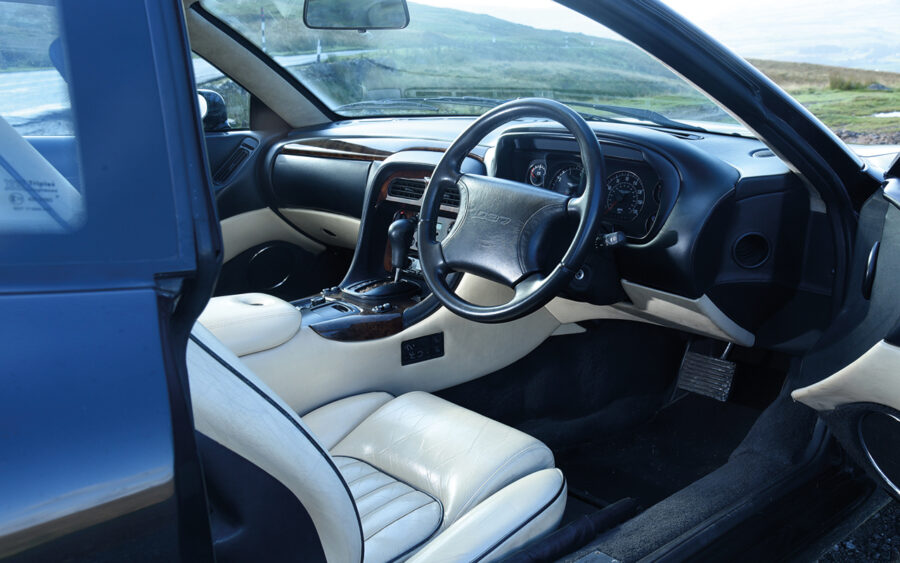
Aston Martin DB7 3.2: our verdict
The six-cylinder DB7 3.2 is one of the cheapest routes into Aston Martin ownership, but because of their low values, many examples are neglected and sold with problems, so tread carefully. Buying from a reputable independent specialist or dealer who offers a warranty is worth the extra over buying privately with no comeback. Should you find an example that has been pampered, keep up the good work and you should be rewarded with reliability and an enthralling taste of supercar ownership.
DB7 3.2 values generally start at around £20,000 for a good example of a coupe, with anything below this amount potentially needing some obvious repairs, such as paintwork or engine trouble. What may seem like a bargain at £10–15k could cost more to fix than buying a meticulously maintained example at £20k.
The vast majority of DB7 models for sale in the straight-six category are coupes, so consequently, the rarer convertibles demand a higher price – expect to pay upwards of £30,000 for a good one. Whichever model you want, most are equipped with a four-speed automatic gearbox, although these early DB7s were also fitted with a five-speed manual, but they are hard to find.

